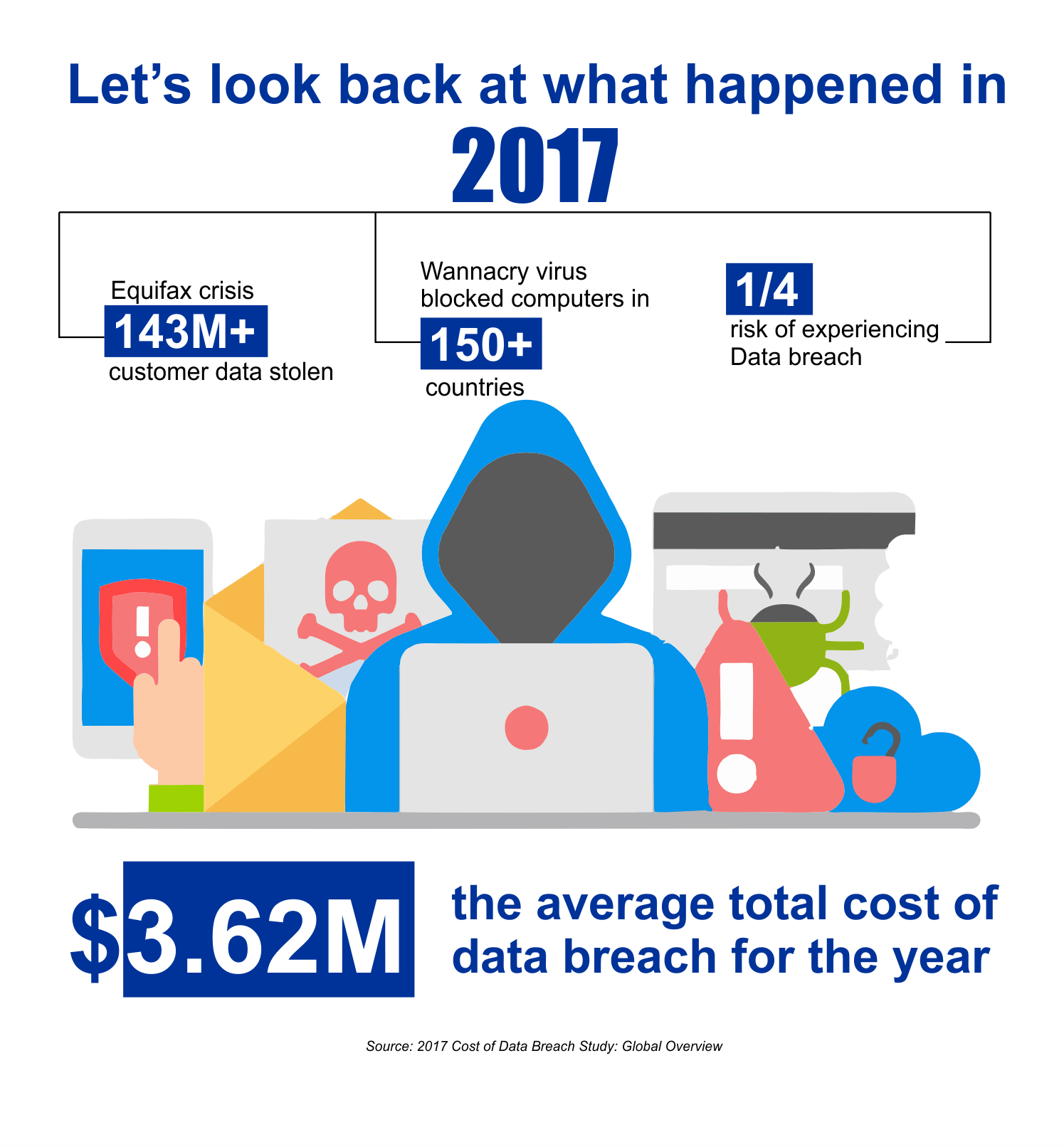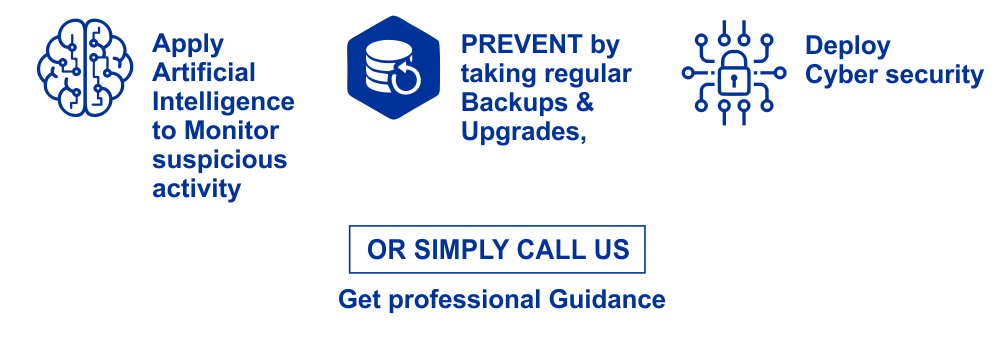
Strengthen Your Business: The Dynamic Duo of DevSecOps Unites Development and Security
DevSecOps bridges the gap between development and security, ensuring a harmonious synergy that safeguards your business.

#FocusOnBestPractices
Understanding the complexities of today’s rapidly evolving threats
Cyber Security is defined as the technologies and processes that protect IT assets from cyber-attacks. It also refers to a set of techniques used to protect the integrity of networks, programs and data from attack, damage or unauthorized access. According to Forbes, the global cybersecurity market is expected to reach $170 billion by 2020. This accelerated growth is being fueled by the latest technology trends like “bring your own device” (BYOD) and the internet of things (IoT); the rapid adoption of cloud-based applications, extending security needs beyond the traditional data center. All these technological advancements, can provide huge benefits to companies, but can also allow hackers exploit the infancy of these trends to gain access to systems and create problems.
2017 could be called the year of the data breach. Between the Equifax crisis (where 143 million American consumers had their personal data stolen), the Wannacry virus (which crippled computers and systems in at least 150 countries over the summer), the Verizon and Kmart breaches to name a few, cyber security has been at the fore front of executives’ concerns at the start of 2018. New threats have emerged in the past two years, and with them has come a large increase in worldwide concern about cybersecurity. In 2014, 69% of executives expressed concern about cyber threats, including a lack of data security, according to a PricewaterhouseCoopers survey. In 2015, an updated survey increased that number to 86%. Cyber Security budgets have also skyrocketed over the last 3 years because of the heavy costs incurred by ransomware and other data breaches. Target’s notorious data breach cost the company more than $260 million. According to the Ponemon Institute’s “2017 Cost of Data Breach Study: Global Overview” the odds of experiencing a data breach are as high as 1 in 4! The study also reveals that the average total cost of a data breach in 2017 was $3.62 million.
These are not figures any executive can afford to ignore.

Even though the cybersecurity question was a concern back in 2015, fears have not been alleviated. Despite billions of dollars invested, a combination of application attacks, malware, ransomware, phishing, exploit kits, ransomware and viruses can easily get the upper hand. This is primarily because our cyber adversaries don’t sit still and have learned how to launch automated attacks at a low cost.
With technology trends like IoT and SaaS (Software as a Service) still very much in their infancy, research has shown that many IoT device manufacturers fail to implement common security measures in their products, leading to backdoors for cyber criminals to access your data and shut down key areas of your business. Hackers exploit these new fledgling technologies to conduct data breaches, corporate or government espionage, and damage critical infrastructure like electrical grids. With IoT being the future of technology, investment in securing these devices need to increase as these devices begin to get more mainstream.
As per Business Insider, around $655 billion will be spent on cybersecurity initiatives to protect PCs, mobile devices, and IoT devices between 2015-2020. Even with all this spending and money being thrown at cybersecurity, organizations and even governments continue to experience data breaches every day. This is because organizations and governments usually have a reactive, approach to combating cyberthreats, waiting for example a Wannacry virus to infect your company’s computers and then spending time and money to try and fix it. Not only is this method expensive and complex, but news of devastating cyber breaches continues to dominate headlines, meaning it is also ineffective.
As artificial intelligence and machine learning continues to be optimized to penetrate more industries, it’s sure to play a big role in increased cybersecurity. Because the battle with cyber criminals moves so quickly, machine learning models that can predict and accurately identify attacks swiftly—or even before they happen—should soon become the norm. Organizations will need to use an automated Next-Gen cybersecurity platform designed to consistently provide prevention-based protection to prevent cyberthreats from impacting the network in the first place and reduce risk to a manageable degree.
Prevention is key for beefing up your cyber security to protect your data. Doing the boring stuff consistently like taking backups regularly, patching and updating systems, and strengthening your real-time defenses dramatically reduces the impact of ransomware and other favorite tools of cyber criminals. For example, if your organization regularly took backups of your data, your IT professional could simply wipe out the Wannacry virus and get you back up and running in no time. If your company took backups recently you didn’t have to play along with your data being taken hostage by ransomware and could simply safely back up your data on a freshly reinstalled computer.
Data breaches are so frequent because most organizations don’t put enough effort into preventing them from happening. If organizations put enough time into making sure their users are educated and know not to open email or attachments from suspicious or spam accounts like the classic “Nigerian Prince whose money is tied up at the moment – but will definitely shower you in riches if you pay the fees or ‘taxes’ they need to get their money”. It’s also not enough to just identify problems – you must act to fix them as quickly as possible to reduce your risk of being exposed to viruses and malware. Too often organizations don’t test their applications or their security. Checking for viruses along with patching and app testing goes a long way to preventing cyber-attacks and costing your organization money in down time or fees.
Cybersecurity is essential for your company to protect your data; protecting your organization will only cost you more in both money and time. The lack of skilled cybersecurity professionals continues to be a major problem for many organizations. The best way for organizations to make sure they don’t experience unnecessary downtime is to upgrade their cyber security to run preventive measures consistently using the latest technology.


DevSecOps bridges the gap between development and security, ensuring a harmonious synergy that safeguards your business.

Security is one of the formidable areas organizations must focus on in this current economic climate.

One of the recent trending topics in the field of data warehousing is Snowflake.
| Cookie | Duration | Description |
|---|---|---|
| cookielawinfo-checkbox-analytics | 11 months | This cookie is set by GDPR Cookie Consent plugin. The cookie is used to store the user consent for the cookies in the category "Analytics". |
| cookielawinfo-checkbox-functional | 11 months | The cookie is set by GDPR cookie consent to record the user consent for the cookies in the category "Functional". |
| cookielawinfo-checkbox-necessary | 11 months | This cookie is set by GDPR Cookie Consent plugin. The cookies is used to store the user consent for the cookies in the category "Necessary". |
| cookielawinfo-checkbox-others | 11 months | This cookie is set by GDPR Cookie Consent plugin. The cookie is used to store the user consent for the cookies in the category "Other. |
| cookielawinfo-checkbox-performance | 11 months | This cookie is set by GDPR Cookie Consent plugin. The cookie is used to store the user consent for the cookies in the category "Performance". |
| viewed_cookie_policy | 11 months | The cookie is set by the GDPR Cookie Consent plugin and is used to store whether or not user has consented to the use of cookies. It does not store any personal data. |